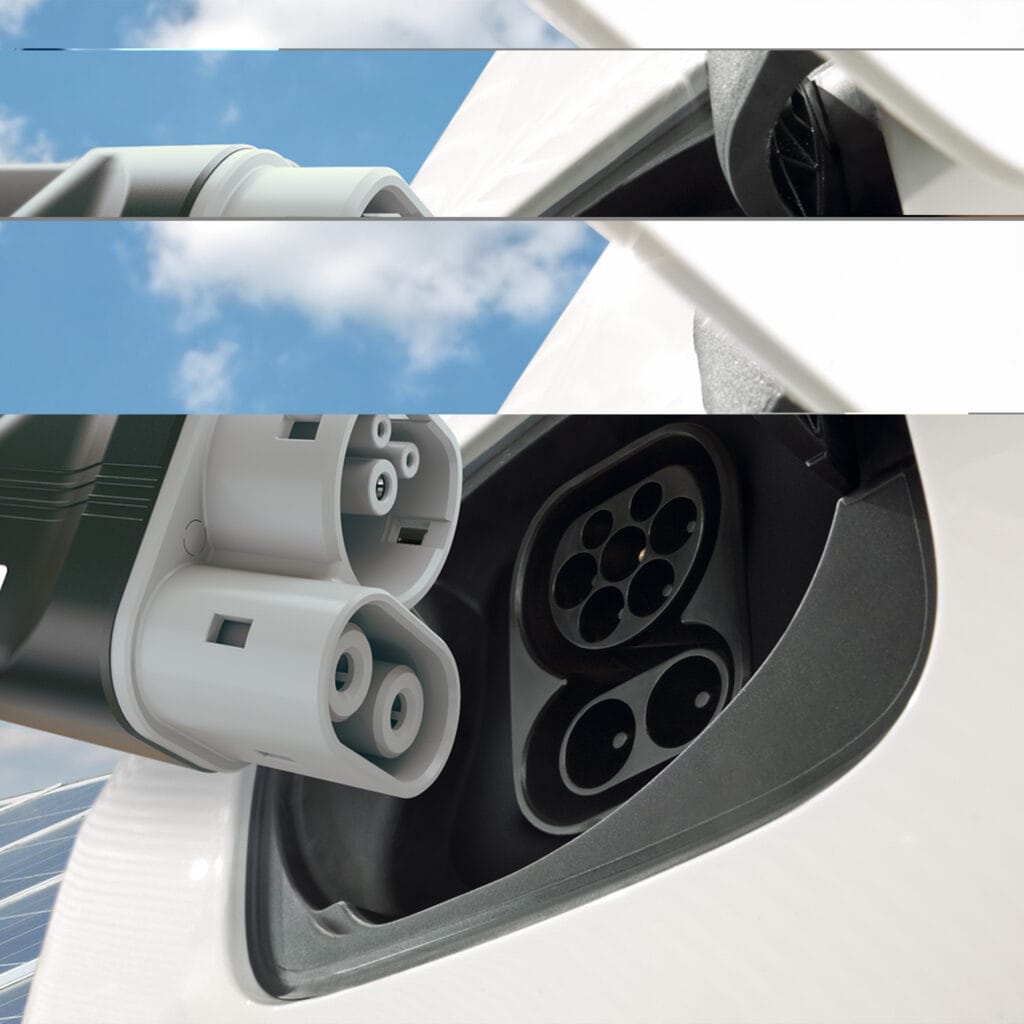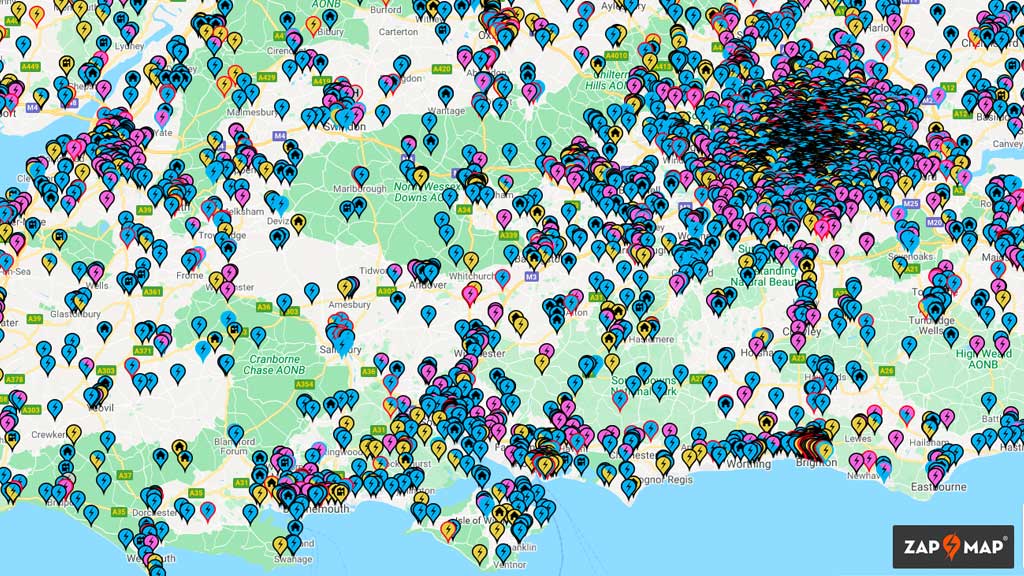You will most likely find that almost all of your charging will take place at home or at work. However, when you go further afield you may need to use the UK’s public charging network.

EV Charging Connections
The first thing you need to know regarding charging your car is your car’s charging connection.
Most EV’s have 2 charging connections – one for rapid charging and one for the slower rate fast charging.

When charging at home or on a public fast charger you will plug into your car using what is its smaller fast charging socket.
There are two different connections your EV may have depending on age. All newer EV’s have a type 2 socket, which is now the standard connection. Some earlier EV’s however may have a type 1 socket, which is slightly smaller.
Into this socket, you will plug the lead from either your 3-pin charging lead, the lead from your home charge point, or your public charging lead that you use to plug into a public fast charger (as these do not have a built-in lead.)
Whether your car has a type one or type 2 connection is largely irrelevant as your car will be provided with a lead that fits its socket at one end, and then either a 13amp plug at the other end or a universal type 2 socket at the charge point end.
There are 3 different types of rapid charging connections, and you need to be sure that the charge point you intend to use has a connecter that will fit your EV.
There are 3 rapid charging connections:

This is fast becoming the standard rapid charging connection on most new EV’s, and it is the connection you will find on BMW’s, VW’s, Newer Kia and Hyundai models, Peugeots, and newer Tesla models, etc. All new rapid charger installations have to have CCS as one of their connections.
This connection is historically favoured by the Asian manufacturers and is present on Nissan Leafs and some of the earlier EVs, such as the early Kia Souls. It is a completely separate large round port on the cars that have it.


This is a less common connection and is used by the Renault Zoe, and the Smart cars, although the newer Zoe has the option of a CCS port for anyone who really plans to be rapid charging their car, as AC rapid charging connections are becoming increasingly harder to find.
With regards to cables, all rapid chargers have a built-in lead so you don’t need any additional lead to charge at one of these charge points.

The rapid chargers are the purple pins on the Zap map, and you can filter to have a zap map to just show the charge points with rapid charging connections that suit your vehicle in the filter menu.

Completely Green Limited is authorised and regulated by the Financial Conduct Authority. Firm Reference number – 790525. We are a broker and not a lender. If you are not happy with the service you have received, you have the right to refer your complaint to the Financial Ombudsman Service.
Please note: Whilst every effort has been made to ensure the accuracy of the used vehicle information and images on this website, some errors may occur. It is important that you do not rely solely on this information, prices or images, and check with us any items that may affect your decision to purchase a vehicle. For an example monthly price, please use the finance calculator on each listing to retrieve a quotation. Representative Hire Purchase Example: Total Deposit: £2000 and Agreement Duration: 48 Months. Representative Personal Contract Purchase Example: Total Deposit: £2000 and Agreement Duration: 48 Months and 8000 miles pa. Representative Personal Contract Hire Example: Total Deposit: 12 months initial rental and 5000 miles pa, and Agreement Duration: 48 Months and Admin Fee: £299. Risk based variable lending rates apply with rates starting from 6.9% APR.